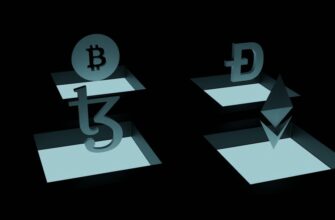- Understanding the Final Bitcoin Halving Countdown
- What Is Bitcoin Halving?
- The Final Halving: Countdown to Digital Scarcity
- Historical Halving Impact: Lessons for the Final Countdown
- Life After the Last Halving: Bitcoin’s New Era
- Tracking the Halving Countdown: Tools & Resources
- Preparing for the Last Halving: Strategic Considerations
- Last Bitcoin Halving Countdown: FAQ
- What triggers Bitcoin halving?
- When is the next Bitcoin halving?
- How many halvings remain?
- What happens when all Bitcoin is mined?
- Does halving guarantee price increases?
Understanding the Final Bitcoin Halving Countdown
The Bitcoin halving countdown isn’t just about the next event—it’s a journey toward digital scarcity. With only 32 halvings scheduled before Bitcoin mining ceases around 2140, each countdown brings us closer to the cryptocurrency’s ultimate supply cap. This guide explores the significance of the last Bitcoin halving countdown, its market implications, and how to track this pivotal milestone.
What Is Bitcoin Halving?
Bitcoin halving is a pre-programmed event in Bitcoin’s code that reduces mining rewards by 50% approximately every four years. Key mechanics include:
- Supply Control: Cuts new Bitcoin creation rate to combat inflation
- Fixed Schedule: Occurs every 210,000 blocks (~4 years)
- Scarcity Engine: Gradually lowers issuance until max supply of 21 million BTC is reached
The Final Halving: Countdown to Digital Scarcity
While the next halving is expected in April 2024, the last Bitcoin halving countdown points to the terminal event around 2140. Here’s why it matters:
- Block Reward Timeline: Rewards drop from 6.25 BTC (current) to 0.00000001 BTC at the 64th halving
- Mining Phase-Out: Post-2140, miners will rely solely on transaction fees
- Absolute Scarcity: No new Bitcoin will enter circulation after 21 million coins are mined
Historical Halving Impact: Lessons for the Final Countdown
Past halvings show consistent patterns that may foreshadow the last halving’s effects:
- 2012 Halving: 9,000% price surge in following year
- 2016 Halving: 2,800% bull run peak
- 2020 Halving: 700% increase to all-time highs
These cycles demonstrate Bitcoin’s increasing scarcity premium—a trend expected to intensify as the final halving approaches.
Life After the Last Halving: Bitcoin’s New Era
When the last Bitcoin halving countdown concludes around 2140:
- Miner Economics Shift: Transaction fees become primary revenue
- Inflation Rate: Drops to 0% permanently
- Security Model: Network stability relies on fee market maturity
- Value Proposition: Bitcoin transitions from “digital gold” to pure store-of-value asset
Tracking the Halving Countdown: Tools & Resources
Monitor the journey to Bitcoin’s final halving with these real-time tools:
- Bitcoin Clock: Visual block countdown (e.g., BuyBitcoinWorldwide.com)
- Block Explorers: Blockchain.com or Blockchair.com for live block height
- Halving Apps: Mobile trackers with push notifications
- Community Hubs: Subreddits like r/Bitcoin for event discussions
Preparing for the Last Halving: Strategic Considerations
While 2140 seems distant, forward-looking strategies matter:
- Long-Term Holdings: Accumulate during pre-halving dips
- Mining Adaptation: Shift toward transaction-fee optimized operations
- Generational Planning: Include Bitcoin in legacy portfolios
- Network Participation: Run nodes to support decentralization
Last Bitcoin Halving Countdown: FAQ
What triggers Bitcoin halving?
Halving occurs automatically when Bitcoin miners validate 210,000 blocks—roughly every four years—reducing new BTC issuance by 50%.
When is the next Bitcoin halving?
The next halving is projected for April 2024, when block rewards drop from 6.25 to 3.125 BTC per block.
How many halvings remain?
After the 2024 event, approximately 30 halvings remain before rewards reach near-zero around 2140.
What happens when all Bitcoin is mined?
Miners will secure the network solely through transaction fees, with Bitcoin becoming a fully deflationary asset.
Does halving guarantee price increases?
Historically yes, but not guaranteed. Scarcity mechanics create upward pressure, though macro factors and adoption drive actual price action.








